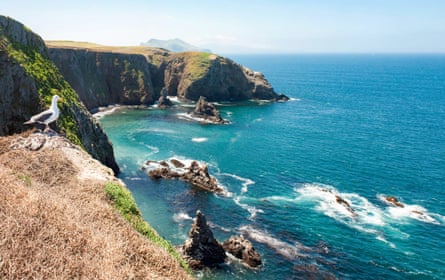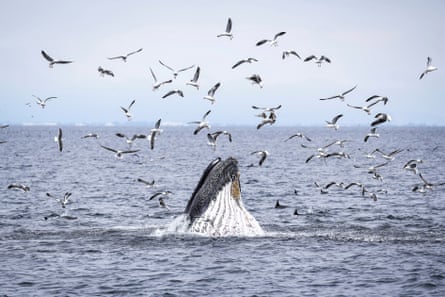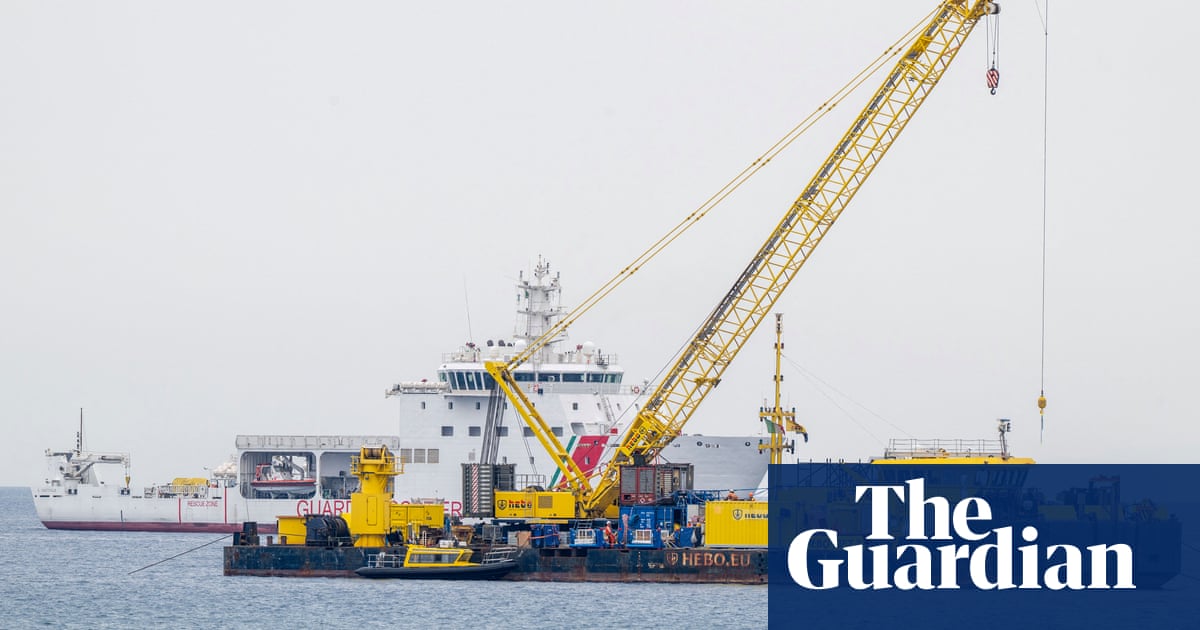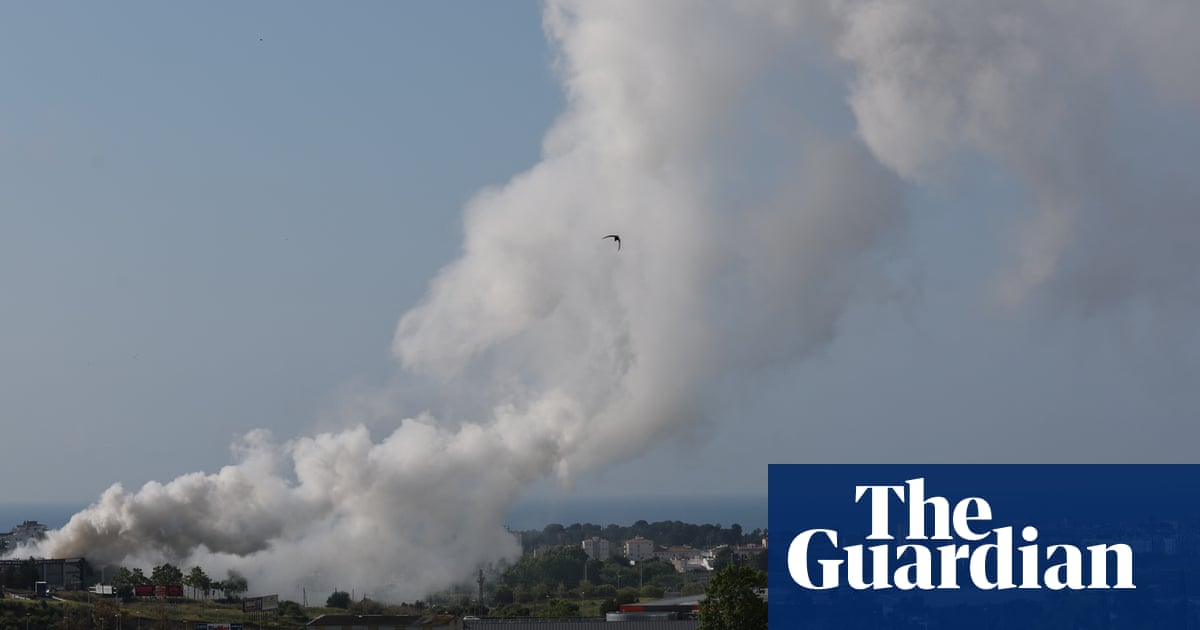Just 14 miles (23km) off the southern California coast lies a vast underwater paradise.
Giant sea bass the size of grizzly bears and schools of sardines glide together through swirling strands of golden kelp, whose long stalks preside over a world exploding with life and color. Playful harbor seals dance into the depths of undulating pink, green and orange plants, alongside spiny crustaceans and vibrant sea stars that embrace the volcanic rock that slopes to the sandy seafloor.
Often called California’s Galapagos, the immersed cliffsides and caves of the Channel Islands are home to thousands of species that thrive on the rugged, pristine and isolated federal parklands and the state-protected waters that surround them.
A lure for research and recreation alike, the 13 designated marine protected areas (MPAs) around the island preserve roughly 21% of their waters as refuge for the species that live there. While the public can access these areas near the cities of Santa Barbara and Ventura to swim, surf and dive, fishing and other activities that could result in harm or habitat loss are prohibited.
But some safeguards for this sanctuary are being questioned.
This year, the California fish and game commission is conducting a required review of these MPAs and considering an array of proposals to either expand or reduce protections around the islands.
The marine protected area network, which now covers 124 coastal sections and spans roughly 16% of state waters, was designated with clear goals in mind and with significant buy-in from the public.

With the MPAs’ first 10-year review under way, California officials are evaluating whether they have been successful at sustaining marine life and ecosystems, maintaining educational, recreational and spiritual use and minimizing economic loss. Twenty petitions have been filed by stakeholders – tribes, fisheries and recreators among them – and are being taken into consideration. Decisions are expected early next year.
Scientists, conservationists and environmental advocates hope the abundance that has flourished here proves the value of preservation.
“We have had two decades of opportunity to learn from the lab of protected areas at the Channel Islands,” said Dr Douglas McCauley, associate professor at the University of California at Santa Barbara and director of the Benioff Ocean Science Laboratory. He called the area “an economic tool”.
With fewer than 290,000 visits to the Channel Islands in 2024, the park is far less trafficked than other loved-to-death outdoor attractions in California (by comparison, Yosemite hosted more than 4.3 million visits last year). But the five remote islands, reachable only by boat, offer a rare glimpse into a wilder world. There are no paved roads, no rental shops and no gift shops, and many of the buildings are of historical and cultural relevance rather than being for visitor use.
It’s this untouched experience that lures adventure-seekers across the channel and into the surf, where the rich biodiversity cultivated by conservation is the primary draw – especially beneath the waves.
“People come from around the state and around the world to dive the Channel Islands, drawn by playful sea lions, underwater cathedrals of emerald kelp forests and giant sea bass weighing four times more than the divers themselves,” said Molly Morse, senior manager at Benioff Ocean Science Laboratory, speaking about a 2023 study she did that showed MPAs drive ecotourism dives.
But the benefits spread beyond drawing hardy tourists, according to McCauley. Barring fishing in specific spaces has not only helped species bounce back – it has also been a boon for the fishing industry.
Speaking over the loud hum of a dive boat engine as it churned through the expanse of blue toward the islands, McCauley likened the regulations to a savings account that generates exponentially higher returns. “When you leave some of this biodiversity without harvesting it, it grows in number but it also grows in size,” he said. Allowing creatures to grow larger means they will produce more eggs and fuel a bounty of biodiversity that spills over into areas where fisheries, recreation and ecosystem recovery can all benefit.
“A very large sheephead,” he said, referring to a uniquely featured fish with a pink middle and large, protruding teeth, “that maybe has the mass of two smaller females, produces far more than just twice the number of eggs.”
Even on the surface on a cold, grey day in May, the area bounds with life. As the coastal communities on the mainland fade against the horizon, scores of dolphins spring through the surf under a cacophony of hungry gulls. A humpback flashes its sides and tail before emerging face-first to gulp its lunch.

But it’s more than just observed abundance. The extensively studied areas have proven able to feed and fuel nearby fisheries. Lobster production alone increased by 225% outside of its boundaries, according to McCauley. Meanwhile, biomass increased by 80% and a study of fish species documented a 50% jump within protected zones in just five years after the MPA designation.
Still, expanding the protections could prove challenging. Commercial fishers are largely supportive of ensuring ecosystems are sustainable but less keen on seeing their rights to more marine areas revoked.
Craig Shuman, marine region manager at the California department of fish and wildlife, told the Associated Press that the marine protected areas are among the most controversial things the agency works on. Last year, a range of stakeholders, which included fisheries, tribes, conservationists and recreators submitted 20 petitions with a range of suggestions, from decreasing or eliminating MPAs to enhancing and improving them. The petitions are under consideration by the commission.
The political tides are also turning and conservation objectives are increasingly on the chopping block. The Trump administration has rolled back regulations on roughly 500,000 sq miles (1.3m sq km) of federal waters, opening once-protected areas to commercial fishing. The president has promised that more actions are on the way.
Meanwhile, the threats continue. The climate crisis has added new challenges with dangers from disasters including fire-debris run-off, increased pollution and the changes caused by a warming world.
“When we protect the ocean, we are really taking care of ourselves,” said Sandy Aylesworth, director of the Pacific Initiative at the Natural Resources Defense Council. She is hopeful that the MPAs will not only be reinforced but expanded: among the proposals are five new MPAs and eight expansions, including four that would make current regulations even more restrictive.

“There are also proposals that would weaken the network,” she said, noting the strong headwinds conservation proposals face locally and across the country. With initial recommendations from the department of fish and wildlife not expected until November, there’s not a strong signal which way things will go.
Until then, the research will continue, as will fishing along the spillover zones where species are bountiful. Divers will swim among the rare and vibrant creatures in the depths. Birds will watch them from perches atop the craggy rocks.
For McCauley, that’s already a tremendous achievement. But he thinks there’s more to do.
“This amazing park is still a baby park,” he said, comparing the 20-year-old Channel Islands national park to the 152-year-old Yellowstone.
“This is just a glimpse,” he said. “Imagine what these values can be if maximized for several generations – for another century of Californians. That is what I would love to challenge ourselves for today.”

 5 hours ago
6
5 hours ago
6













































